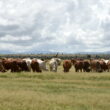By Richard N Mangodza – CEO of Animal Science Experts
The fundamentals of meat science are very crucial and bring an interesting topic of Value addition which can be traced back into centuries.
However, in the context of Zimbabwe, according to our recent research titled: Potential of value meat processing and value addition in Zimbabwe – little is done to add value on meat and meat products. Economic wise we are losing a lot of money by our failure to add value to meat. It is also of high importance to note that meat processing is usually coupled by value addition.
What is meat value addition?
Meat value addition can be defined as a change or conversion of meat and meat products in a manner that results in the enhancement of the value of meat and meat products. Meat processing involves transforming raw material into edible products through application of scientific knowledge, labor and machinery. Bulk meat, perishable and inedible food materials are re converted into shelf stable, convenient and palatable foods by means of value addition.
Value addition in meat can be centered on a number of aspects namely profitability, consumer preferences and technological feasibility. On customer side, value added meat and meat products often have minimized preparation steps and time, better utilization of low value cuts as well as from slaughter houses.
The structural change in the meat adds value in several ways. This not only provides portion control, but also changes the cut marks of low value carcasses. This technology allows processors to select specific parts for molding while removing unwanted connective tissue and fat.
Re-organization is useful for many different types of meat, especially pork and poultry. However, its use in beef products is usually limited to fully cooked products used in sandwich applications due to its tendency to impart a rubbery texture to finished products.
Different processing and cooking methods are used to produce different value-added products. The quality of the final products depends on the quality of the raw materials, composition and processing.
Different types of meat products are available around the world depending on the process, consumer eating habits and acceptability. Emulsified meat products such as sausage, salami, etc. are very common in the world. Shelf-stable resealable bags are very popular these days because they do not require refrigeration.
Fish can be used to make many value-added fish products, such as fish sausages, cutlets, patties, balls, pasta, surimi, and textured products. The products follow ethnic processing methods. Recently, some non-heat treatment methods such as high-pressure treatment, infrared and sous vide treatment have been improved. They are becoming popular due to their unique processing, which is suitable for the environment and also for energy saving.
In processed meat, phosphates act as a buffer and change the pH of the salt solution to the alkaline side. This change in pH creates more water-holding capacity as the number of charged groups in the protein increases. Meat with a pH between 5.8 and 5.9 has a higher affinity for water and gives a higher yield. The pH of products to be dried is usually 5.5-5.6.
Brine pH also affects the color of cured meats by affecting the stability of nitrite, a critical component of the color development reaction. Nitrite is stable in salt water as long as the pH is above 7.0. If the nitrite is unstable, it turns into nitrous oxide, which flashes before the salt is injected.
Regardless of the method used to add value to meat products, one of the biggest challenges facing the food industry is convincing the consumer that quality has not been compromised for convenience. “How can you win over consumers who think meat needs to be slow cooked with delicious vegetables or marinated for a long time with just the right spices to be tender, juicy and well-seasoned?”.
Contact Animal Science Experts on Mobile: +263 772 768 494; Email: animalscienceexperts@gmail.com











